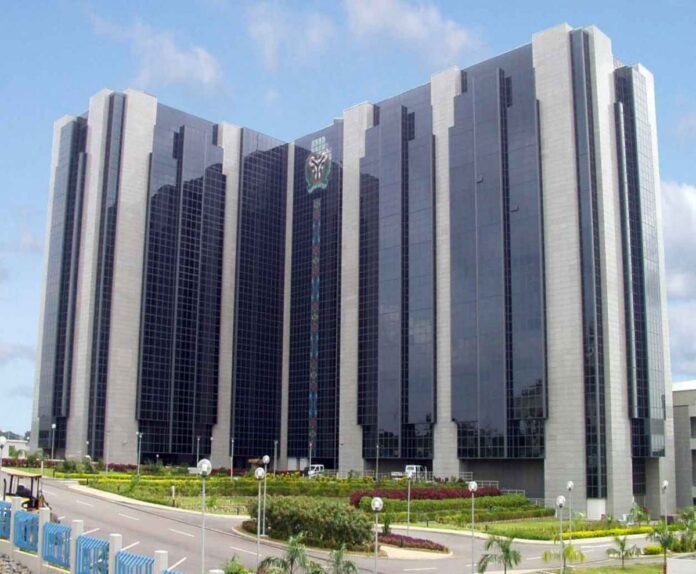The remainder of 2025 appears poised for a stronger performance, with FX reforms and stable commodity prices providing support for growth. Already, Nigeria’s Gross Domestic Product (GDP) rose to a 4-year high of 4.23 per cent in second quarter, with further growth expected in the rest of the year. With declining inflation rate, the Central Bank of Nigeria (CBN’s) monetary policy easing goal supports move to attract new investments, lower lending costs and promote government’s overall plan of achieving business and sustainable economic growth
The economy is currently on the path of sustainable growth. The second quarter Gross Domestic Product (GDP) report solidly puts growth within the quarter at 4.23 per cent, representing a 4-year high of 4.23 per cent in second quarter of the year’, up from 3.13 per cent in first quarter, mainly reflecting the effect of the rebasing.
The National Bureau of Statistics (NBS) report showed the growth was driven by appreciable improvements across the oil and non-oil sectors, with stability in the country’s oil sector and expansions in agriculture, industries and services sectors cumulating in above average performance output.
The GDP breakdown showed that the oil sector grew by 20.46 per cent in second quarter 2025 as against 1.87 per cent recorded in first quarter, riding on the back of double-digit growth in crude oil production.
The NBS reported that crude oil production averaged 1.68 million barrels per day (mb/d) in second quarter 2025, 19.1 per cent above 1.41mb/d recorded in comparable second quarter of 2024. Crude oil production averaged 1.62 mbpd in first quarter 2025. With this, the contribution of the oil sector to GDP increased from 3.97 per cent in first quarter 2025 to 4.05 per cent in second quarter 2025.
What the CBN is doing
Announcing the outcome of the September MPC meeting in Abuja, CBN Governor Olayemi Cardoso said the change in policy stance was based on review of macroeconomic developments.
According to him, the decision by the MPC to ease the policy stance was made in the light of improving inflation trends.
“The committee’s decision to lower the monetary policy rate was predicated on the sustained disinflation recorded in the past five months, projections of declining inflation for the rest of 2025 and the need to support economic recovery efforts,” Cardoso said.
Cardoso explained that the introduction of new measures was aimed at strengthening monetary control, improving liquidity management, and reinforcing the TSA regime.
Partner & Corporate Finance Expert at TNP, Bukola Bankole, said that by lowering the benchmark rate by 50bps to 27 per cent, the MPC made a modest but symbolic move as it marks the first break from months of aggressive tightening. For businesses already borrowing at rates above 30 per cent however, this adjustment will not ease financing costs immediately, but it signals recognition that growth cannot be perpetually stifled in the name of inflation control.
“For investors, Nigeria’s yield story remains unchanged because even after the cut, local instruments remain among the most attractive across frontier and emerging markets. So, a half point change does little to alter that. The real test is whether inflation starts to ease and whether the Naira can achieve meaningful stability”.
“As we all know, inflation in Nigeria is not demand-driven; it is cost-push, reflecting exchange rate volatility, the knock-on effects of subsidy removal, high energy costs, and food supply disruptions. So certainly, against this backdrop, further hikes would have been the wrong medicine,” she said.
“I will say this MPC decision reflects an effort to balance vigilance on inflation with the need to create space for credit expansion and investment. The real challenge however remains consistency, as without predictable policy, stronger fiscal alignment, and structural reforms that address the root causes of inflation, this cut will remain symbolic as with a lot of other actions previously taken”.
“If those elements are however in place, then this small cut could truly mark the beginning of a more sustainable policy mix that supports growth without abandoning the fight for price stability”.
Managing Director, Financial Derivatives Company Limited, Bismarck Rewane, said the remainder of 2025 appears poised for a stronger performance, with foreign currency inflows and stable commodity prices providing support. December is shaping up as an upbeat period, boosted by diaspora remittances, “Detty December”, and increased spending on concerts, films, and festivals.
“The naira should remain stable around N1,500–N1,550/$, and headline inflation could ease to 20 per cent. The MPC is also likely to cut rates in November, sustaining optimism into the festive season,” he said.
Monetary Policy perspectives
In its efforts to tame inflation, the CBN recently hosted the Monetary Policy Forum 2025, featuring fiscal authorities, legislative, private sector, development partners, subject-matter experts, and scholars with the theme: “Managing the Disinflation Process”.
The forum is a major push to improve monetary policy communication, foster dialogue, and collaborate on critical issues shaping monetary policy.
During the event, Cardoso explained that the apex bank’s focus is to sustain price stability, the planned transition to an inflation-targeting framework, and strategies to restore purchasing power and ease economic hardship.
He said the apex bank is continuing its disciplined approach to monetary policy, aimed at curbing inflation and stabilising the economy.
Cardoso reiterated that the goal of the CBN is to ensure that monetary policy remains forward-looking, adaptive, and resilient.
In addressing our economic challenges, collaboration is key: “Managing disinflation amidst persistent shocks requires not only robust policies but also coordination between fiscal and monetary authorities to anchor expectations and maintain investor confidence,” Cardoso said.
“Our focus must remain on price stability, the planned transition to an inflation-targeting framework, and strategies to restore purchasing power and ease economic hardship,” he added.
The CBN also focused on strengthening the banking sector, introducing new minimum capital requirements for banks (effective March 2026) to ensure resilience and position Nigeria’s banking industry for a $1 trillion economy.
These reforms and developments reflect the Bank’s commitment to creating an enabling environment for inclusive economic development. However, achieving macroeconomic stability requires sustained vigilance and a proactive monetary policy stance.
“As we shift from unorthodox to orthodox monetary policy, the CBN remains committed to restoring confidence, strengthening policy credibility, and staying focused on its core mandate of price stability,” Cardoso stated.
He said moving from the exchange rate targeting framework to the inflation targeting framework aligned with the apex bank’s determination to bring inflation upsurge under control in line with its price stability mandate.
Inflation uptick has remained a major concern to the CBN and is the time to use monetary policy tools to control it.
Non-oil sector growth continues
The non-oil sector also recorded growth of 45 basis points, expanding by 3.64 per cent in second quarter 2025 as against 3.19 per cent in the previous quarter. Non-oil sector’s contribution to the economy stood at 95.95 per cent in second quarter as against 96.03 per cent in first quarter, despite the strong oil sector growth.
Segmental analysis indicated appreciable growths across the non-oil sector. Agriculture GDP grew by 2.82 per cent in second quarter 2025 as against 0.07 per cent recorded in previous quarter. It had grown by 2.60 per cent in second quarter 2024.
Industries GDP, which had grown by 3.72 per cent in second quarter 2024, doubled to 7.45 per cent in second quarter 2025 as against 3.42 per cent in first quarter 2025. However, Services GDP was slower with a growth of 3.94 per cent in second quarter as against 4.33 per cent in previous quarter. It had recorded 3.83 per cent in second quarter 2024.
In terms of contribution, Services, Agriculture, and Industries accounted for 56.53 per cent, 26.17 per cent, and 17.31 per cent of the overall GDP respectively.
Experts said the latest GDP report showed that the economy was on the right track but called for more synergistic policies to deepen economic productivity.
Chairman, Nigeria Economic Summit Group (NESG), Mr. Niyi Yusuf, said the economic report underlined the gains of macroeconomic reforms, although the government needs to do more to catalyse the full potential of the economy.
“This is a steady progress in the right direction, and we need to stay the course, maintain momentum, and drive for broad based growth across all sectors of the economy. We need more pro-growth regulations and regulators, predictable justice system, more private sector investments in critical sectors and security of lives and assets to fully unlock the potential of the economy,” Yusuf said.
World Bank growth projection
The World Bank recently gave a positive verdict on Nigeria’s economic growth trajectory, highlighting three-year unbroken growth for the country.
In the bank’s Global Economic Prospects for June, the bank posited that Nigeria will have three-year unbroken growth records- growing at 3.6 per cent in 2025, 3.7 per cent in 2026 and 3.8 per cent in 2027.
The World Bank however, slashed its global growth forecast for 2025 by 0.4 percentage point to 2.3 per cent, saying that higher tariffs and heightened uncertainty posed a “significant headwind” for nearly all economies.
In its twice-yearly Global Economic Prospects report, the bank lowered its forecasts for nearly 70 per cent of all economies – including the United States, China and Europe, as well as six emerging market regions – from the levels it projected just six months ago before U.S. President Donald Trump took office.
The bank stopped short of forecasting a recession, but said global economic growth this year would be its weakest outside of a recession since 2008. By 2027, global gross domestic product growth was expected to average just 2.5 per cent, the slowest pace of any decade since the 1960s.
The bank said global inflation was expected to reach 2.9 per cent in 2025, remaining above pre-COVID levels, given tariff increases and tight labor markets.
According to the World Bank, growth in Sub Saharan Africa is projected to strengthen to 3.7 per cent in 2025 and average 4.2 percent in 2026- 27, assuming the external environment does not deteriorate further, inflation declines as expected, and regional conflicts subside.
The World Bank Group’s Chief Economist and Senior Vice President for Development Economics, Indermit Gill, said that outside of Asia, the developing world is becoming a development-free zone.
“It has been advertising itself for more than a decade. Growth in developing economies has ratcheted down for three decades—from 6 percent annually in the 2000s to 5 percent in the 2010s—to less than 4 percent in the 2020s. That tracks the trajectory of growth in global trade, which has fallen from an average of 5 percent in the 2000s to about 4.5 percent in the 2010s—to less than 3 percent in the 2020s. Investment growth has also slowed, but debt has climbed to record levels.”
The World Bank’s Deputy Chief Economist and Director of the Prospects Group, Ayhan Kose, said emerging-market and developing economies reaped the rewards of trade integration but now find themselves on the frontlines of a global trade conflict.
“The smartest way to respond is to redouble efforts on integration with new partners, advance pro-growth reforms, and shore up fiscal resilience to weather the storm. With trade barriers rising and uncertainty mounting, renewed global dialogue and cooperation can chart a more stable and prosperous path forward,” he said.


